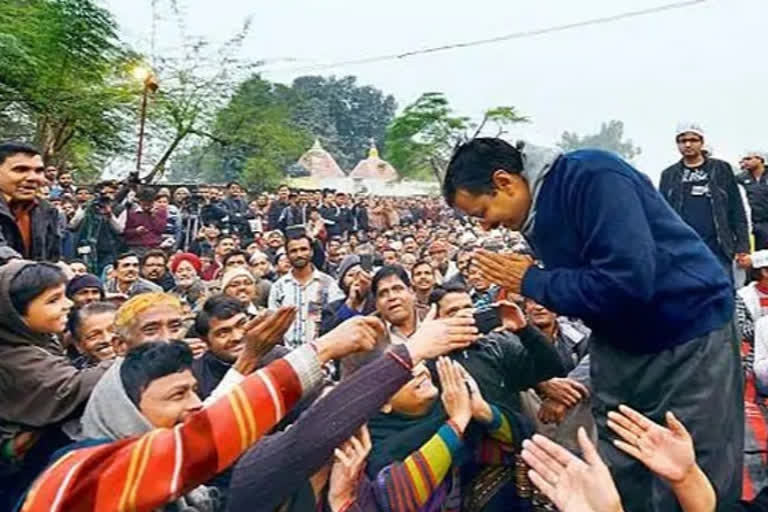Hyderabad: It was an early Monday morning dilemma for Sushil (name changed). A ‘slightly’ left-leaning academic residing within the tall walls surrounding JNU, his polling centre lay near the Kendriya Vidyalaya School outside the university campus.
“Arvind Kejriwal didn’t come to JNU during the crisis period even once. I had hoped he will. But then there is no other alternative too on whom to vote for,” Sushil gingerly said, strongly hinting whom he voted for.
On the verdict, he offers his opinion, “the 62-08 Delhi verdict is a no-no to divisive politics and the politics of polarization. People had development on their mind.”
Across the length and breadth of Delhi, there were many like Sushil. In a way, it was the result of a typical Kejriwal positioning.
Reciting ‘Hanuman Chalisa’, much-publicised temple visits, and not dropping by either in JNU when it was battling troubled times or in Shaheen Bagh where numbers of Delhiites are on a prolonged and seemingly never-ending sit-in, the Delhi chief minister may be unleashing his own brand of ‘Hindutva’ in his own diminutive way. It was not the typical in-your-face religiosity and extensive use of Hindu imagery. Even in his political campaigning, he never made direct attacks on PM Narendra Modi.
At the same time, nor did Kejriwal vociferously oppose the anti-Citizenship Amendment Act (CAA) protests that rocked JNU, Shaheen Bagh and elsewhere in the national capital.
The stand, therefore, was of not taking a stand on the controversial issue but to warily steer clear of them.
No wonder, as the results strongly indicate, Muslims voted overwhelmingly for AAP as did huge numbers of Hindus. It was a masterstroke by Delhi’s Muffler-man, so named because of his trademark wrap around his neck to stave of Delhi’s bitter cold.
On the other hand, the Congress never did campaign seriously for the Delhi polls making the poll fight a two-way battle. Perhaps to secure the anti-BJP forces, and in a significant move that may indicate future consolidation of the opposition against the BJP, the country’s oldest party ended in helping AAP rake up its winning numbers.
The results also indicate that the politics of polarisation are yet to operate at the state or local level, although on the national scene, it may be a force to reckon with. And that is what explains the seemingly conflicting scenario. As many poll pundits say, despite the Delhi assembly result, the BJP will have a dominant showing even now when it comes to the Lok Sabha polls.
In the 2019 parliamentary polls, all of Delhi’s seven seats returned to BJP candidates. In other words, BJP’s brand of hyper-nationalism remains intact at the national level.
Therefore, at the local level, national leaders and national issues did not really make a deep cut. It had much more to do with locally identifiable leaders and the age-old mantra of ‘roti-kapda aur makaan’ (food, clothing and shelter) in a judicious blending with ‘bijli, sadak and pani’ (electricity, roads and potable water) topped off by public welfare programmes in schools, deflated water and electricity bills, free Metro rides for women, etc.
Also read: Kapil Sibal slams authorities for not taking action in Gargi College molestation case
At a broader level, after a slew of electoral losses in several states, and with the ruling BJP-led NDA maintaining brute numbers in the Lok Sabha, the role of the opposition in the country will relegate to states and to a certain extent, in the Rajya Sabha, where the NDA may have to fight to get hold of absolute majority numbers ‘present and voting’ that is needed for constitutional amendments.



